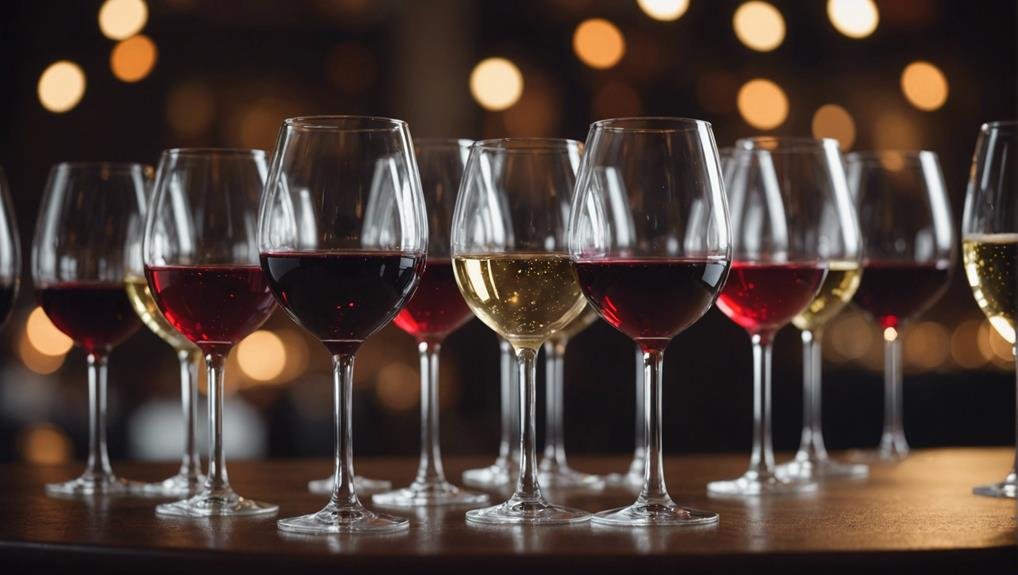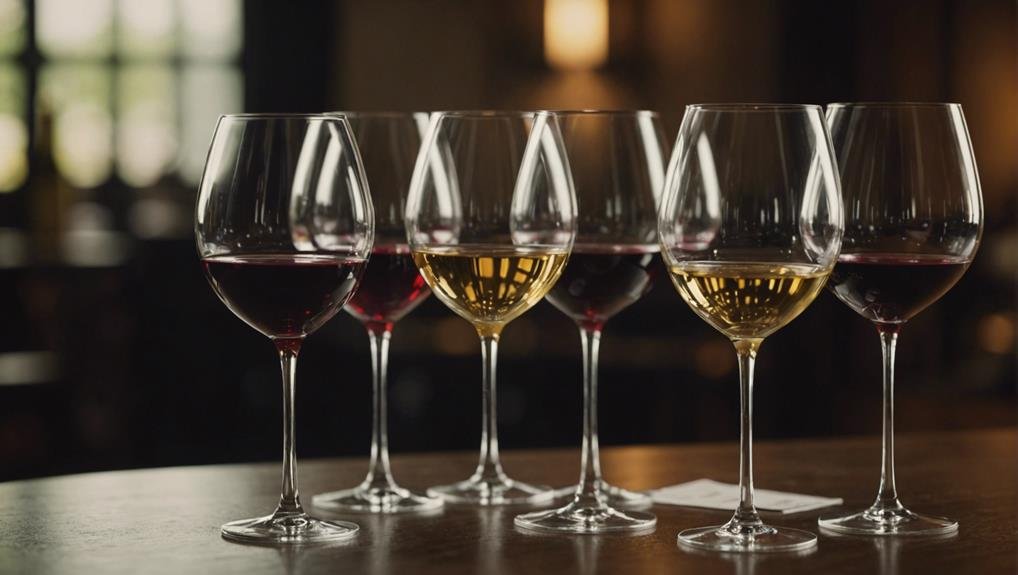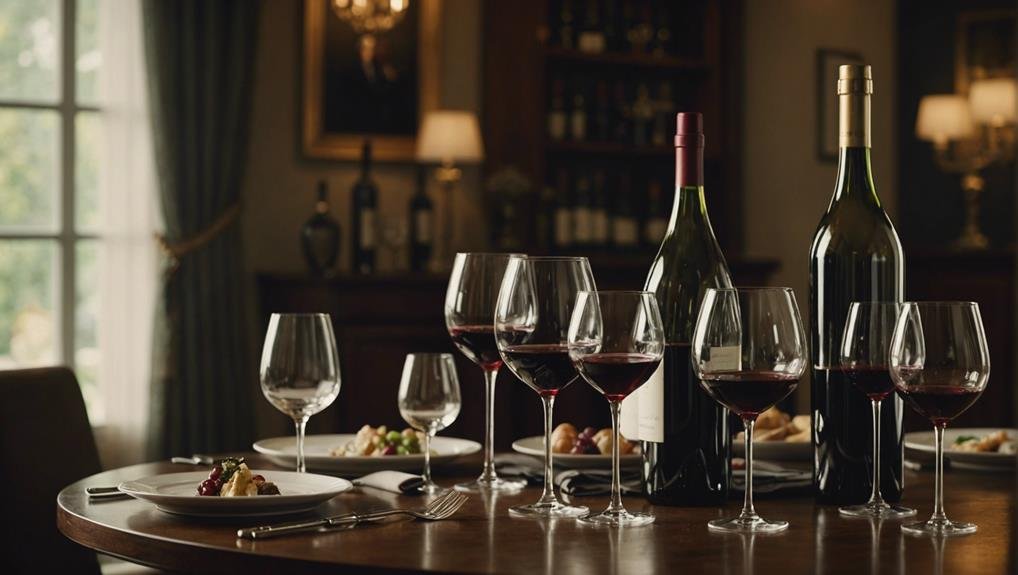Step into the captivating world of wine, where every sip shares a unique tale. The intricacies and subtle flavors waiting to be discovered are endless, offering a realm of sensory delights that engage the senses.
By unraveling the mysteries of wine, you'll find hidden treasures that enhance your enjoyment and understanding. Are you ready to explore the stories within each bottle, enriching your palate and knowledge of this timeless beverage?
Wine Types and Varieties

Explore a wide variety of wines to broaden your palate and knowledge of different grape types. From the refreshing Moscato to the rich Cabernet Sauvignon, there are over 200 wine types to discover.
By learning about the 18 noble grape varieties, you can pinpoint your wine preferences and delve into a spectrum of flavors and scents. Whether you enjoy light, sweet whites or deep, intense reds, there's a wine to match your taste.
Trying out various wine types not only refines your palate but also enriches your understanding of the diverse range of flavors found in the world of wine.
Wine Regions Around the World
Embark on a fascinating journey through the world of wine and discover the diverse and enchanting wine regions worldwide. From the picturesque vineyards of Bordeaux, France, to the sun-drenched valleys of Napa, California, each region offers a unique terroir that influences the flavors of its wines.
Italy is renowned for Tuscany and its famous Chianti, while Australia's Barossa Valley is celebrated for its bold Shiraz. Spain's Rioja region produces exceptional Tempranillo wines, and New Zealand's Marlborough is known for its crisp Sauvignon Blanc.
Understanding Wine Characteristics

When it comes to understanding different types of wine, it's essential to pay attention to key characteristics. These factors play a significant role in how a wine tastes and feels.
Body, for instance, refers to the wine's weight and texture in your mouth, ranging from light to full-bodied. Acidity adds freshness and balance to the wine, while tannins contribute to its structure and can leave a dry feeling in your mouth.
Sweetness levels vary from bone dry to very sweet, influenced by grape variety and winemaking techniques. Alcohol content affects the warmth you feel in your throat.
Exploring Sweetness in Wines
Understanding the varying levels of sweetness in wines is essential for exploring the diverse array of flavors and styles found in the wine world. From bone-dry to lusciously sweet, wines span a spectrum of sweetness levels that cater to different preferences. Here is a breakdown to help you navigate the sweetness levels in wines:
| Sweetness Level | Description | Examples |
|---|---|---|
| Bone-Dry | No perceptible sweetness | Brut Champagne, Sauvignon Blanc |
| Off-Dry | Slightly sweet on the palate | Riesling, Pinot Gris |
| Medium-Sweet | Noticeable sweetness | Moscato, Chenin Blanc |
| Sweet | Richly sweet | Late Harvest Riesling, Sauternes |
Mastering Wine Drinking Etiquette

Improve your wine-drinking experiences by mastering the art of social wine etiquette. When you're at gatherings, remember to hold your wine glass by the stem to prevent warming the wine with your hand.
Gently swirl the wine to release its aromas before taking a sip. It's best to sip the wine slowly, avoiding loud slurping noises.
If you're tasting multiple wines, start with the lighter ones and progress to the heavier ones. Showing appreciation by taking a small sip when the wine is served is considered polite.
During toasts, maintain eye contact and clink glasses gently. If you're unsure about which wine to choose, feel free to ask for recommendations.
Frequently Asked Questions
How Can I Tell if a Wine Is Corked or Just Old?
To determine if a wine is corked or old, simply take a good sniff. A corked wine will have a musty, moldy smell, while an old wine might have a flat or stale odor. Trust your sense of smell to quickly assess the wine's condition.
What Are the Best Food Pairings for Rosé Wines?
When enjoying rosé wines, consider pairing them with light dishes such as salads, seafood, or grilled vegetables. These refreshing and fruity wines complement the flavors of your meal beautifully, creating a delightful harmony on your palate. Let your taste buds revel in the joy of combining rosé with your favorite foods for a truly enjoyable dining experience.
Is Decanting Wine Necessary for All Types of Reds?
Decanting wine isn't always necessary, but it can really improve the taste of young, tannic red wines. Swirling your wine in a decanter allows the bold flavors to open up and develop. Trust your taste buds and try decanting to see how it affects your enjoyment of the wine.
Can You Suggest Some Unique and Underrated Wine Regions?
If you're looking to explore lesser-known wine regions, consider places like Tokaj in Hungary, Brda in Slovenia, or the Bekaa Valley in Lebanon. These hidden gems promise unique and delightful wine experiences that are sure to surprise you.
What Are Some Tips for Storing Wine in a Small Apartment?
When storing wine in a small apartment, it's important to keep the bottles away from direct sunlight and temperature fluctuations. You can use a wine rack or a closet to store the bottles horizontally, which helps to keep the corks moist. Maintaining a consistent cool temperature is key to proper wine storage, ensuring that your wine stays in optimal condition.
Conclusion
Now that you've learned the ins and outs of wine from this essential guide, you're prepared to confidently explore the world of wine with a newfound appreciation.
By understanding the various types of wine, different regions, unique characteristics, levels of sweetness, and proper drinking etiquette, you can enrich your tasting experience and expand your palate.
Here's to your enhanced knowledge and enjoyment of this intricate and captivating beverage! Cheers to your wine journey ahead!